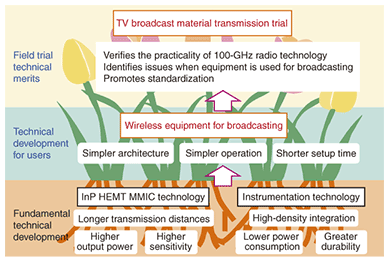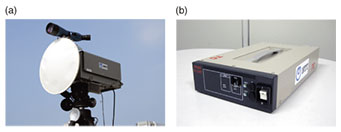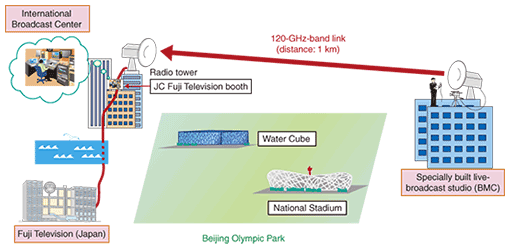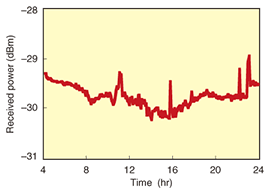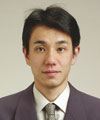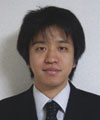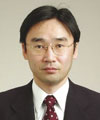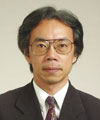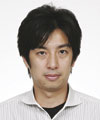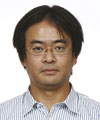 |
|||||||||||
|
|
|||||||||||
|
Special Feature: Applied Technology for Millimeter and Terahertz Electromagnetic Waves Vol. 7, No. 3, pp. 17–22, Mar. 2009. https://doi.org/10.53829/ntr200903sf3 Transmission Trial of Television Broadcast Materials Using 120-GHz-band Wireless LinkAbstractThis article describes a transmission trial conducted at the Beijing Olympics using the 120-GHz-band wireless link equipment we have developed for use at a broadcast site. The wireless equipment is light and small and has low power consumption and can be operated as easily as the conventional field pick-up units that TV stations use for wireless transmission of high-definition television signals for TV program production.
1. IntroductionDigital terrestrial television broadcasting is currently spreading rapidly in Japan in anticipation of the end of analog broadcasting in July 2011. As of March 2006, the adoption rate for digital receivers was 15%, but this was expected to increase to over 50% by mid-2008 driven by the Beijing Olympics [1]. One of the features of digital terrestrial broadcasting most appreciated by viewers is high-definition television (HDTV) broadcasting. One of the difficulties in producing HDTV programming is transmitting the raw broadcast materials. The transmission of uncompressed HDTV signals, which have a data rate of 1.5 Gbit/s, requires a large bandwidth. Broadcasters normally use a microwave radio device called a field pick-up unit (FPU) to transmit broadcast materials, but current FPUs can transfer only 30–60 Mbit/s. To transmit an HD signal using these devices, one must compress the signal to a few tens of megabits per second using technology such as that standardized by the MPEG (Moving Pictures Experts Group). However, data compression introduces delay into the video signal, which causes problems in live broadcasts by interfering with smooth conversation and cuts from one camera to another. For these reasons, TV broadcasters have been eagerly awaiting the appearance of high-capacity wireless link technology capable of transmitting uncompressed HD signals. In response to this need, we have developed ultrabroadband wireless link technology using 120-GHz-band millimeter-wave signals. The 120-GHz-band wireless link can transfer data at up to 10 Gbit/s. We are advancing the development of high-output, high-sensitivity, compact wireless link systems through our development of a monolithic microwave integrated circuit (MMIC) which uses indium phosphide high electron mobility transistors (InP HEMTs) [2], [3]. We are also continuing to study and evaluate the transmission characteristics of 120-GHz-band signals through field trials to gain an adequate understanding of them. As applications for the 120-GHz-band wireless link in broadcasting, we have also developed a six-channel-multiplexed uncompressed HD signal transmission system and proposed a new program-production approach that combines a motion-control camera system with an ultrahigh-speed remote-control camera head. However, to make this broadcast material transmission equipment usable in practice, it was felt necessary to identify particular issues affecting the transmission of TV broadcast materials by actually using the equipment at a broadcasting site. The experience of producing TV programs using the 120-GHz-band wireless link system and the publication of the results should also help to promote the use of over-100-GHz-band radio technology in the industry. Therefore, we conducted a trial of the 120-GHz-band system to transmit broadcast materials at one of the highest-profile events in recent history: the Beijing Olympics. The trial’s objectives are shown in Fig. 1. In this article, we describe the trial conditions and the wireless link equipment developed for the trial.
2. 120-GHz-band wireless link systemFor live TV broadcasts, there is a strong demand to minimize the time required from material arriving on the site until it is ready to broadcast. This leads to certain requirements for the specifications of the FPU used to transmit broadcast materials. It must be (1) very simple in structure, (2) quick to assemble, and (3) easy to operate. The equipment must also be very reliable because if there is any trouble with the radio link during the transmission of a live program, the transmission to viewers will be interrupted. The 120-GHz wireless link equipment we previously developed was designed to test 10-Gbit/s data transmission, so it did not meet the requirements for use in on-site live-broadcast transmission, particularly with regard to usability and set up [3]. Therefore, we developed new 120-GHz-band wireless link equipment for use in the Beijing Olympics trial, which featured similar usability, configuration, and simple setup to the FPU equipment currently in wide use by broadcasters. The new equipment is shown in Fig. 2 and its architecture is illustrated in Fig. 3. The 120-GHz-band signal is generated by the same InP HEMT MMIC millimeter-band module used in earlier wireless equipment. The center frequency of the wireless link system is 125 GHz, the occupied bandwidth is from 116.5 to 133.5 GHz, and the maximum output power is 13 dBm. The wireless equipment uses a Cassegrain antenna with a diameter of 450 mm and gain of 48.7 dBi. The maximum data-transmission rate is 11.1 Gbit/s.
The transmitter has a simple architecture, consisting of three components: the head, which generates the radio signal, the controller, which supplies power and the data and control signals to the head, and the antenna, which emits the millimeter-wave signals. The head and controller are connected by a camera cable that combines power, control lines, and optical fibers for carrying the data signals, allowing the controller to supply power and remote control as well as transmission data via a single connector. The power supply uses 150 V DC, which allows the head to be located up to 1 km away from the controller. Three types of input-signal interface are provided: electrical (1–11 Gbit/s), optical (9.95–11.1 Gbit/s), and uncompressed HDTV signal (1.5 Gbit/s). The input-signal interface can be selected by changing the data signal switch in the head. The selected data signals are amplified by a limiting amplifier and input to the transmitter (Tx) module. The 15.625-GHz continuous-wave (CW) signal is also fed in to the Tx module. The Tx module multiplies the 15.625-GHz CW signal and generates a 125-GHz millimeter-wave signal amplitude-modulated by data signals. The output signal of the Tx module is amplified up to 13 dBm by a power amplifier module and emitted from the Cassegrain antenna. With the early transmitters, it was not possible to simply fit the antenna to the head as is done with wireless equipment like a standard FPU. The waveguide for the 120-GHz-band millimeter-wave signal is extremely small (2 mm × 1 mm), so high precision is required when connecting to the head of the wireless equipment. Antenna connection is a three-step process: (1) attach the antenna to the head, (2) open the head enclosure and connect the antenna to the module, and (3) close the head enclosure. In the new link, we used a bayonet mechanism in the transmitter, so the antenna can be attached in one motion. As a result of various measures, including increasing the implementation density and using a field programmable gate array for the controller and monitor, the head is one sixth the volume and half the size and weight of earlier units [3] (190 mm (W)× 380 mm (D) × 130 mm (H), 7.3 kg). Moreover, it now consumes less than 100 W, so that it can be operated using a 12-V battery. We obtained experimental radio station licenses from the Japanese Ministry of Internal Affairs and Communications on May 8, 2008. We applied for permits to test four sets of wireless link equipment in order to perform tests for evaluating interference between wireless links. Furthermore, to allow for propagation tests in various environments, and for evaluation in various on-site environments, we specified the testing region of the experimental radio station license to include the whole of Japan except for regions where it would interfere with radio-astronomy activities. Outdoor experiments over a distance of about 400 m were conducted using 10.3-Gbit/s pseudorandom bit sequence data. A bit error rate below 10-12 was obtained with received power of over -38 dBm. The maximum transmission distance estimated from the output power, antenna gain, and minimum received power for error-free transmission is about 2.0 km. 3. Beijing Olympics live-transmission trialThe Beijing Olympics (29th Summer Olympics) were held from August 8 to 24, 2008, in Beijing, the capital of the People’s Republic of China, and was watched by approximately four billion viewers around the world. Moreover, all international video of all events and competitions at this event was produced to HD signal specifications. The live-video transmission trial procedure is illustrated in Fig. 4. The 120-GHz-band wireless signal was used to transmit the uncompressed HD video signal shot at the Beijing Media Center (BMC) to the International Broadcast Center (IBC). The BMC is a specially built relay studio facing the Olympic park and has an unobstructed view of several venues including the National Stadium and the Water Cube. The Olympic update reports were done at the BMC, showing the announcer or journalist with the Olympic park in the background. The receiver was installed on a radio tower on the roof of the IBC, and the demodulated signal from the receiver was then transmitted via the JC Fuji Television booth (JC: Japan Consortium) in the IBC to Fuji Television headquarters in Japan.
The schedule for programs using the 120-GHz-band wireless link is shown in Fig. 5. It included 24 different news, information, and other programs during the period from August 1 to 19, produced during times of extreme weather (40°C heat and heavy rain). The received power fluctuation of the wireless link (Fig. 6) was below 1 dB for 20 hours. These results indicate that the output power fluctuation and the divergence of the antenna axis were small. Not one error was observed in the 120-GHz-band wireless link, and HD image transmission was very stable. For live, interactive correspondence from the BMC and the IBC booth, we were able to use the special characteristics of the 120-GHz radio link in program production, with conversation proceeding much more smoothly than with regular microwave-band FPU radio links as a result of the absence of delay normally inevitable in microwave FPU radio links.
4. ConclusionWe have developed a 120-GHz-band wireless link designed for use at a broadcast site. This link achieved error-free transmission of over-10-Gbit/s data signals and uncompressed HD signals. It was used for a transmission trial of broadcast materials for live TV programs of the Beijing Olympics. This trial showcased our transmission system, which featured the first ever use of 120-GHz-band millimeter-wave signals in the industry, and demonstrated technical standards suitable for practical use. We plan to actively promote these results at conferences and exhibitions and stimulate the demand for over-100-GHz, broadband wireless-transmission systems by showing how effective they are for ultrahigh-speed wireless communications. We also plan to present these results to an ITU-R (International Telecommunication Union, Radiocommunication Sector) Working Party as a technical report to promote future standardization of over-100-GHz radio systems. On the technical side, we will accelerate development of automatic antenna-axis alignment technology to help reduce the time required for equipment positioning, which was one of the problems identified by broadcast technicians in the trial. We will also continue with testing in various environments using the four sets of wireless link equipment to gain a deeper understanding of the propagation characteristics of 120-GHz-band millimeter-waves. References
|
|||||||||||








